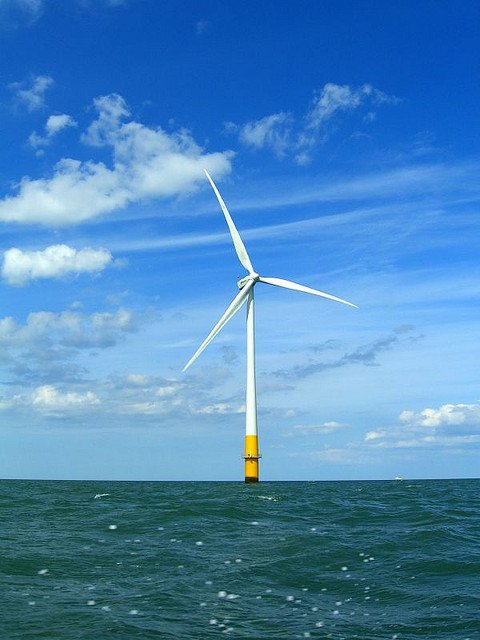Announcements from the Massachusetts Department of Public Utilities don’t always get me out of bed in the morning, but one that came across the wires this week is noteworthy for its importance for Massachusetts and for U.S. offshore wind. The Department of Public Utilities (DPU) has just announced its approval of a 15-year agreement between NSTAR, the utility serving the Boston area, and the developers of Cape Wind, a proposed offshore wind project off Cape Cod.
The announcement is big news for the company, certainly, but also for customers of NSTAR, other citizens of the fine state of Massachusetts, New Englanders, and the good old U.S. of A.
What they get
For Cape Wind, the power purchase agreement (PPA) with NSTAR and a similar earlier one with another local utility (National Grid) give them and investors the financial certainty they need to move forward with the project. As Cape Wind’s Financial Advisor Theodore Roosevelt IV, a Managing Director of Barclays Capital Corporation and notable environmentalist, put it, “these two PPAs provide Cape Wind with the critical mass to continue securing project financing.”

Photo credit: phault
The deal gives NSTAR the rights to 27.5 percent of Cape Wind’s “output.” The price is 18.7 cents per kilowatt-hour (kWh) initially, increasing 3.5 percent each year, with possibilities for adjustments up or down based on things like how much the developers are actually making once the project is live.
What we get
The PPA price is close to retail electricity rates and considerably higher than wholesale. So why are people, including the DPU (and us), excited about this deal?
Well, for one thing, the 18.7 cents/kWh is an “all-in” price, for more than just electricity. It includes electricity (kWh), capacity (kilowatts themselves), and the renewable energy-ness—the environmental and economic benefits or attributes that utilities often use to comply with the renewable electricity standards that 29 states plus DC have adopted. An apples-to-apples comparison demands that we look at the pieces that make up the PPA price, not just compare it to wholesale.
The Cape Wind deal also means much more for the region’s energy/renewable energy progress. As the DPU states, given Cape Wind’s size and expected availability (a high “capacity factor,” because offshore winds are more consistent), compared to other renewables projects it:
will produce far greater benefits in terms of its: (1) contribution to narrowing the projected gap between supply and demand of renewable resources; (2) contribution to compliance with [the Massachusetts Global Warming Solutions Act’s] emission reductions requirements; (3) contribution to fuel diversity; (4) price suppression effects; (5) ability to act as a hedge against future fuel price increases and volatility; (6) contribution to system reliability; and (7) ability to moderate system peak load.
When smart people do the math, they come up with some really encouraging figures. One expert testified during the DPU proceedings that given the price suppression effects (from having all that renewable energy at a low marginal cost), for example, the NSTAR-Cape Wind contract actually “provides positive monetary benefits to NSTAR customers” of tens of millions of dollars. That is, its added savings could be more than the above-market costs. And for the region as a whole, a Cape Wind-commissioned analysis projected billions of dollars of savings over 25 years.
What we get: Beyond Nantucket Sound
The “what we get” picture also extends far beyond Massachusetts. Cape Wind was the first offshore wind project proposed in the U.S. But it’s the vanguard for a whole slew of project proposals and possibilities — along the Eastern seaboard, in the Great Lakes, even off Texas. And a project like Cape Wind can have important spin-off effects with notable economic development implications in its home region.
The project’s importance as a precedent is why UCS, which virtually never gets involved in particular projects, has been involved with Cape Wind since early in the process, helping to ensure a fair process so that we could all decide based on facts, not idle speculation.
And the potential and promise of offshore wind is why we helped form, several years ago, the U.S. Offshore Wind Collaborative, an organization “catalyzing the American offshore wind energy market through partnerships, analysis, and new ways of thinking about challenges and solutions.”
Baby steps and giant ones
Cape Wind and its supporters have been through a lot in the decade-plus since the project was first mooted: many reviews by many state and federal agencies, countless public hearings, lots of input, scientific or otherwise, well-meaning or not. But with this week’s decision, Cape Wind’s launch is much closer. In the words of my esteemed colleague Sue Reid of the Conservation Law Foundation, who graciously represented UCS in the DPU hearings, the ruling is “another giant step toward the finish line for Cape Wind.”
Getting Cape Wind off the ground — in the water — will also be a giant step for adding offshore wind to the array of tools we have for cleaning up the U.S. power sector, creating new jobs, stabilizing electricity prices, and upping our game on climate change mitigation. It’s high time.
